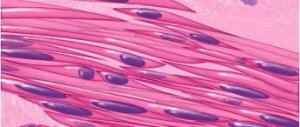
All iLive content is medically reviewed or fact checked to ensure as much factual accuracy as possible.
We have strict sourcing guidelines and only link to reputable media sites, academic research institutions and, whenever possible, medically peer reviewed studies. Note that the numbers in parentheses ([1], [2], etc.) are clickable links to these studies.
If you feel that any of our content is inaccurate, out-of-date, or otherwise questionable, please select it and press Ctrl + Enter.
Stem cells extracted from fat can form muscle better than others
Last reviewed: 01.07.2025
 ">
">Scientists from the University of California in San Diego (USA) have come to the conclusion that it is best to make muscles from adipose tissue. Those who have long been planning to pump excess fat into muscle mass, but were too lazy to even do physical exercises, do not have to worry - we are talking about the transformation of fat cells into muscle cells through the stem cell stage. This is a rather delicate molecular genetic procedure, which, however, can help many people with muscle injuries and various muscular dystrophies.
Replacing diseased tissue with healthy tissue using stem cells is an old idea at first glance, but scientists have encountered a number of problems with muscle tissue. Stem cells programmed to become muscle cells grow poorly in the new, bone-muscle environment: they form disordered tangles and lumps that bear no resemblance to muscle fibers.
In a paper published in the journal Biomaterials, the researchers propose using stem cells derived from adipocytes, cells in fat tissue, as a way out. The main feature of the right cells should be the ability to grow on a hard surface and form ordered structures. The scientists took regular bone marrow stem cells and reprogrammed fat cells and tested how they would behave on various surfaces, from soft (like brain tissue) to absolutely hard, like bone.
The cells obtained from adipose tissue turned out to be 40-50 times better than regular stem cells. The muscle proteins in the former adipocytes were organized in the correct order, as in real muscle cells. At the same time, such cells felt their environment better and quickly occupied the correct "niche" on the surface. They even formed muscle tubes (a critical stage in muscle formation). And such tubes retained their structure when transferred from surface to surface. They were connected to each other thanks to a common cytoskeleton, so at this stage they could withstand certain changes in the environment, transfers, transplants, etc.
However, before recommending them for clinical use, these cells must be tested for a variety of biochemical and cytological parameters that would confirm that the former fat cells are muscle cells.

 [
[